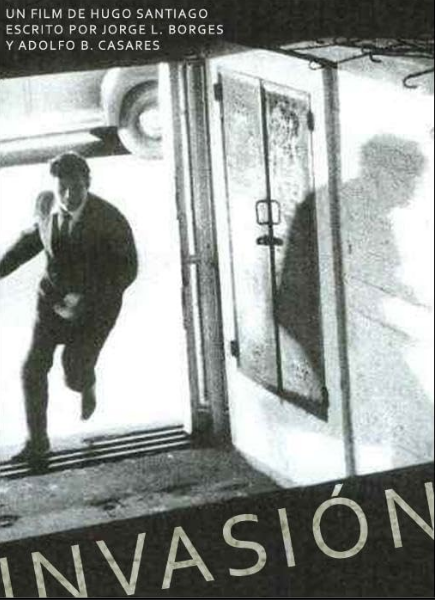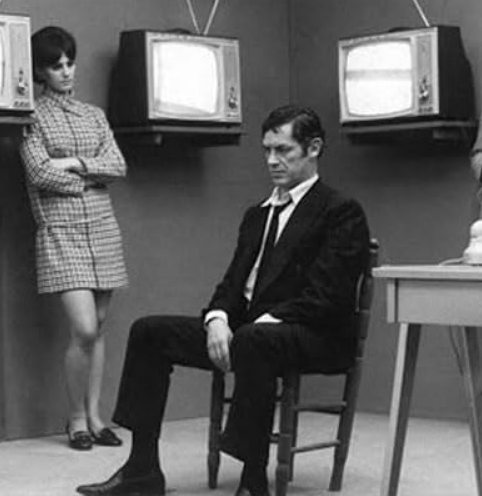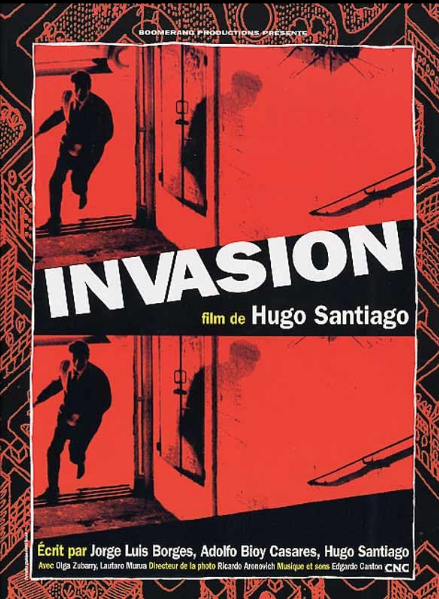Invasión (1969)
IMDb meta-data is a runtime of 2 hours and 3 minutes, rated 7.2 by 919 cinematizens
DNA: Argentina
Genre: Spy Fy more than Sy Fy, Species: Jorge Luis Borges
Verdict: All style.
Tagline: On and on it goes.

In a fictional city of Aquileia a number of men and women, middle class and working stiffs, young and old, men and women respond to the enigmatic signal from an old man – ‘It’s today.’ There are discrete nods, weapons are secretly passed from a woman to a man, a group of men playing cards in a cafe seem to be talking in code, some impatient youths lash out, these are members of the resistance who are pursued by men in light coloured suits. Most of the resistance members wear black.
The invasion has already started and most of the population either hasn’t noticed or doesn’t care, and gets on with life, but not these resistors. Like a communist cell, each member of the resistance only knows a small part of the puzzle. Those apprehended by the Lights are beaten and tortured with cattle prods in the ear (off camera). The Darks murder prisoners on camera.
One by one the resistors are killed, but eager new recruits replace them, and it goes on and on. The old man from the beginning makes new plans.
There is little dialogue, and what there is mostly is clipped and coded.
I came across it on a list of Science Fiction films and the description there implied that the invaders were otherworldly in some way. Not so. Yet the IMDb tags it as Sci-Fi but I can’t see why. Moreover, it had that magic name associated with it – Jorge Luis Borges. Superb acting by one and all.
So it goes without much rhyme or reason, just like the latest war reported in the evening news. It prefigures a good part of Argentine history, as the Montonero terrorism precipitated the Dirty War and on to the Falklands War.

Irene and her husband Herrera are both resistors but only she knows that. Herrera thinks she is a stay at home wife. They both have assignments independent of each other. How little husbands and wives know of each other is the stuff of drama, comedy, and life.
Perhaps its contemporary resonance caused it to disappear like so much else in Argentina. The prints and negatives were seized and destroyed during the Dirty War. Or more likely, it was a mindless act of destruction. This version was reconstituted from four different sets of partly burned prints and negatives in 2007. That explains the oddities on the soundtrack.
It is as enigmatic as L’armée des ombres (1969) and has the pace of Compartiment tueurs (1965). That is good company. At two plus hours, it is way too long for the story it offers. The reconstructors may have wanted to include everything they found, but a producer could easily have cut thirty minutes.

